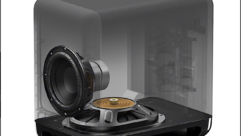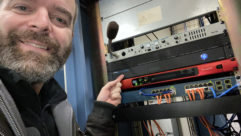Spreading The News
Running a consistent PR campaign can help AV pros increase credibility and sales.
Getting exposureApproaching the pressMaximizing the benefitConsistency counts
KEITH RICH knows what a lot of integrators don’t — that visibility in the press can be very valuable in closing new customers. Rich, who is president and CEO of ISR Inc., a home theater and commercial AV integrator based in Lisle, IL, has made media placements a cornerstone of his marketing program, successfully placing more than 1,000 articles about his company in 25 years.
“The main benefits of a media program are visibility, brand identity, reputation, and bottom line, increased demand and sales of key products and services,” says Bryan Stanton, president of Norfolk, CT-based J. B. Stanton Communications, which works in the AV industry. Stanton says that in many cases, properly placing these stories can make an AV company seem larger and more prominent than it actually is. For a pro AV dealer or integrator, that translates into a greater ability to close sales.
Properly approached, a good story should be profitable for the integrator as well as the publication. But, it’s also important to realize that most media won’t publish a blatant sales pitch. “We need to provide highly informative material that their particular readership will learn from,” says Stan Pinkwas, vice president of J. B. Stanton.
There are several types of stories that the media will likely publish, although each publication has its own requirements. AV trade magazines, for example, typically publish installation articles. Stanton says integrators seeking to publish these articles should look for unusual installations that solve a business problem or make a business more efficient or productive. Trade media in your clients’ specialty areas, such as educational technology, house of worship, facilities management, or corporate training, may also publish AV stories centered on systems that can be useful to their readers.
Various business publications such as the business section of your local newspaper or specialty papers like Crain’s New York Business will often publish trend-based articles such as a story on the growing use of digital signage. However, consumer magazines may be more interested in articles about home theater systems installed in celebrities’ homes or how AV systems affect people’s lifestyles.
Integrators can also take a cue from manufacturers and trade organizations, which often pinpoint trends through surveys that are commissioned or conducted in-house and released to the media. “For example, Sony did a survey on the effectiveness of streaming media in schools versus class visits to a factory, university, or zoo,” Stanton says. A dealer or contractor might take a similar approach with its own research, or demonstrate how a particular installation illustrates a trend that’s already in the news.
Bylined articles written by a company principal can also help build your firm’s reputation. “You’re not writing about your own products or services, but topics that relate to them,” Stanton says. “In the end, that’s a very effective way of recognizing your authority in the field and making you visible.”
If you have the opportunity to speak to a local organization or at a trade show, Stanton says it may make sense to invite the appropriate media. “The press will come if it’s a legitimate topic, event, or charity affair, but not if they feel it’s just a free plug for the installer,” he says. “You’ll need to address your field of expertise and the benefits to that particular group.”
Stanton says it’s also wise to alert the press to speeches yourself, rather than leaving it up to the sponsoring organization to publicize. The Crain’s papers and some trade publications also often run upcoming events listings for these types of events. Even if you’re running a very typical seminar or event, you can use them to help get the word out to potential attendees.
Once you’ve identified an installation, trend, or piece of news worth publicizing, Stanton says there are a few simple steps AV pros should take. “First, look at the particular story and think about the type of readership it would appeal to,” he says. “Then prepare a one-page outline. If it’s an installation story, what about it is unique? Next, target the proper person at each medium to approach.”
How do you find the right media contacts? You can find editors’ names on the publication’s masthead (usually printed in the first few pages), which lists its address, phone number, and staff, or on the publication’s website.
While sending out press releases can be helpful for manufacturers with earnings news or a new product to introduce, a privately held dealer or contractor will be hard-pressed to come up with this type of news. Instead, Stanton says integrators should take a one-page outline and approach editors by phone, email, or letter. But exclusivity is key. If you approach editors individually and offer them stories no one else will see, they’ll be more likely to respond.
It’s a surprise to many AV pros that getting a story published isn’t the end of the PR process. What you do with the placement afterward is what’s most important. Instead of hoping potential clients saw your story in a publication or on the news, it pays to be proactive. Make reprints of the article or put the news story on tape and send it to your customers and top prospects.
“Most people think, ‘I’m getting PR, that means I’m going to get 100 calls,’ but that’s not going to happen,” Rich says. Instead, he says integrators need to build a portfolio of reprints they can take to meetings with prospective clients.
Stanton agrees. “The reprint is far more valuable than the original placement,” he says. “It has legs, which means it can be read by and distributed to potential customers, whether by mail, email, or on your website.”
Stanton says the goal is to build a continuous media presence. “Consistency counts more than an occasional big story,” he says. “If you’re in the media on a regular basis, that really drives the point home that you’re a key player.”
Although press coverage is free, it’s important to make PR an ongoing priority, which can often require a significant investment in time or money. Rich, who handles PR in-house, says his company spends 10 to 20 hours per week on PR efforts.
For integrators that don’t have the time or resources to dedicate to PR, hiring an agency can help. “The trick is finding an agency that knows this industry, but even then you have to commit time to give them the information and material they need,” Stanton says.
This investment makes sense if you look at the media as you would a large potential client. As with any client, you need to understand an editor’s needs. Maintaining positive relationships are also crucial to building repeat business.
For those starting out, Pinkwas says smaller media placements can be helpful in winning larger ones later. “Often a client will come to us and say he wants to be in Time magazine, but I say before we do that, we have to establish your company within the industry,” he says.
If you take the time and effort, PR can give AV pros a significant edge on competitors in the field. “If you throw two integrators into the same market, and one takes the trouble to educate the market about his particular capabilities through the media, but the other doesn’t, it’s easy to see who’ll have the advantage,” Stanton says.
Don Kreski is an independent marketing consultant with more than 24 years of experience in the pro AV industry. He holds an MBA in marketing and finance and can be reached at [email protected].










